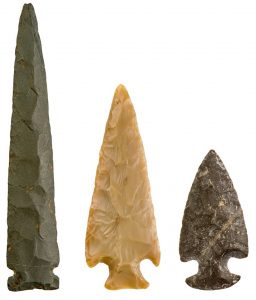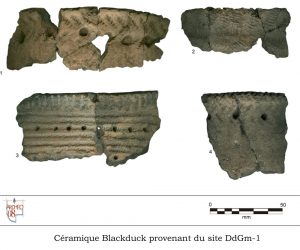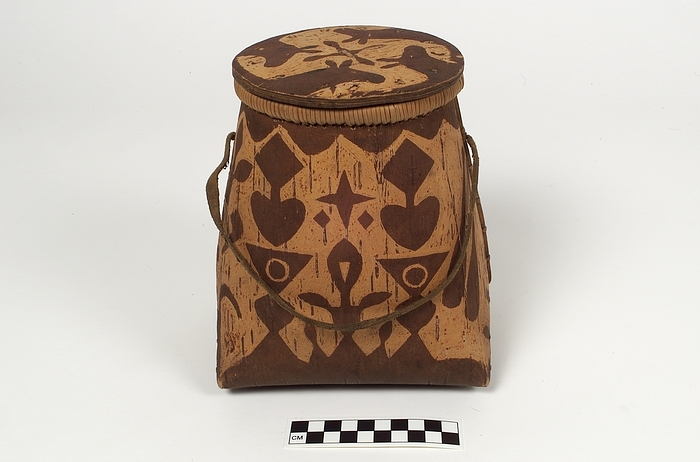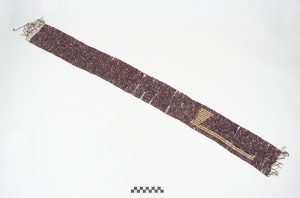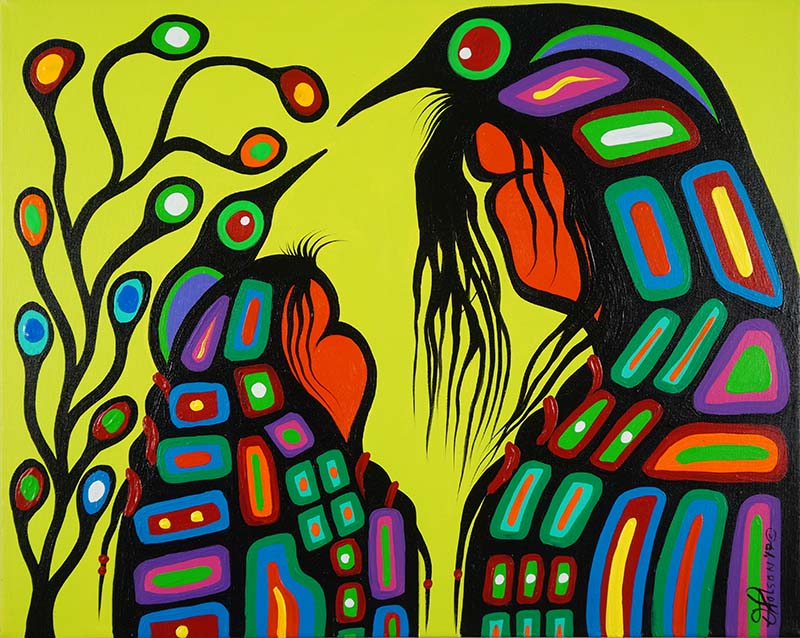Nature as a Model
The materials used in Anicinabe’s art came directly from the surrounding environment. Wood, bones, porcupine quills, everything that could be harvested from the natural environment. Birch bark had numerous functions and was of great importance. It was removed from living trees and used for numerous creations: exterior siding for homes, canoes, baskets and containers, cones to call moose, etc. For the Anicinabek, there was no distinction between art and handicrafts. For them, a decorative object and a usable object are one and the same. The term “art” as we know it has little to no meaning to the First Nations. It doesn’t in any way diminish the artistic talent and creativity of the artist, but “the work of art” always has a use.
For the Anicinabek, the act of creating stems from millennia of tradition and translates their ability to adapt to the North-American environment. The absence of written historical information profoundly deprives us of interpreting the root of these creations. What we do understand is to what point their creations have always represented a link between people and nature, as well as the depths of their spirituality and beliefs (ancestors, spirits).
Their artistic expression was equally influenced by their contact with other Aboriginals as well as the arrival of the Europeans to Canada. The art created by the Anicinabek is enriched by objects, sculptures, drawings, paintings and clothing that is delicately adorned with pearls. It’s a progressive transformation that continues to connect with artists today, like Norval Morrisseau and Frank Polson from The Woodlands School of Art.


